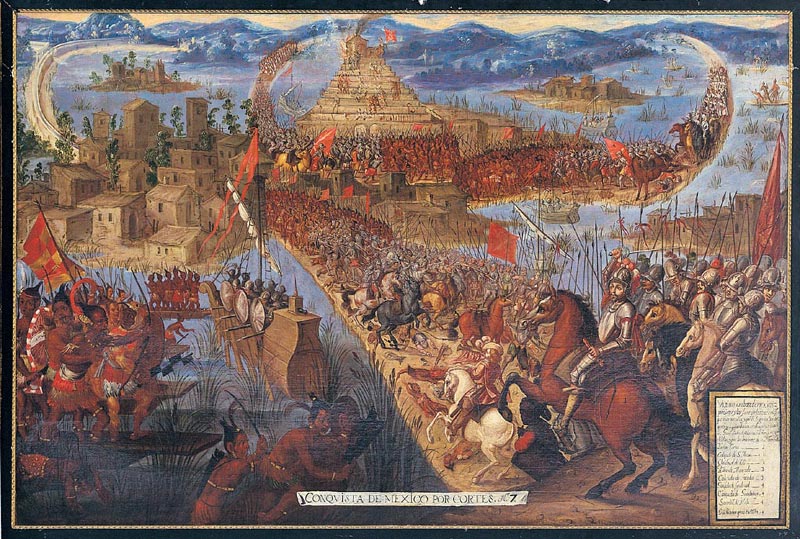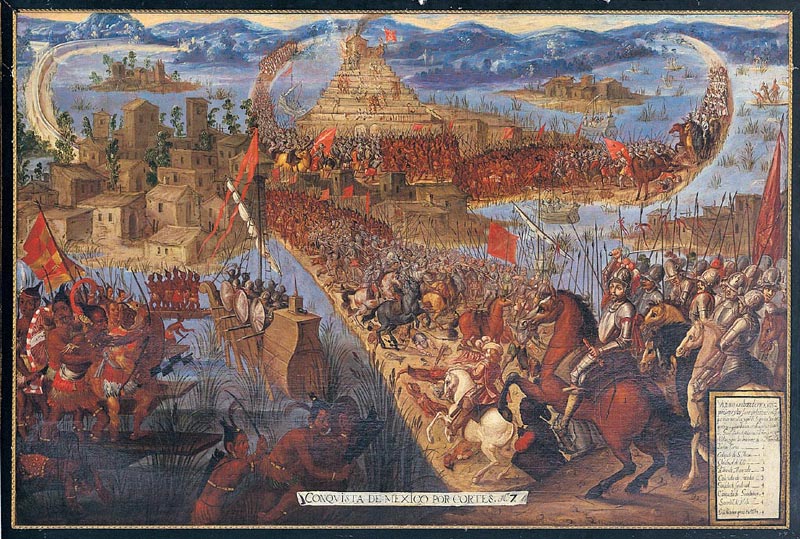Every year, from September 15 through October 15, people celebrate Hispanic Heritage Month in the United States. Let us remember that this year, 2021, marks the 500th anniversary of the Fall of Tenochtitlan, the Mexica capital. A modern inscription marks that event.
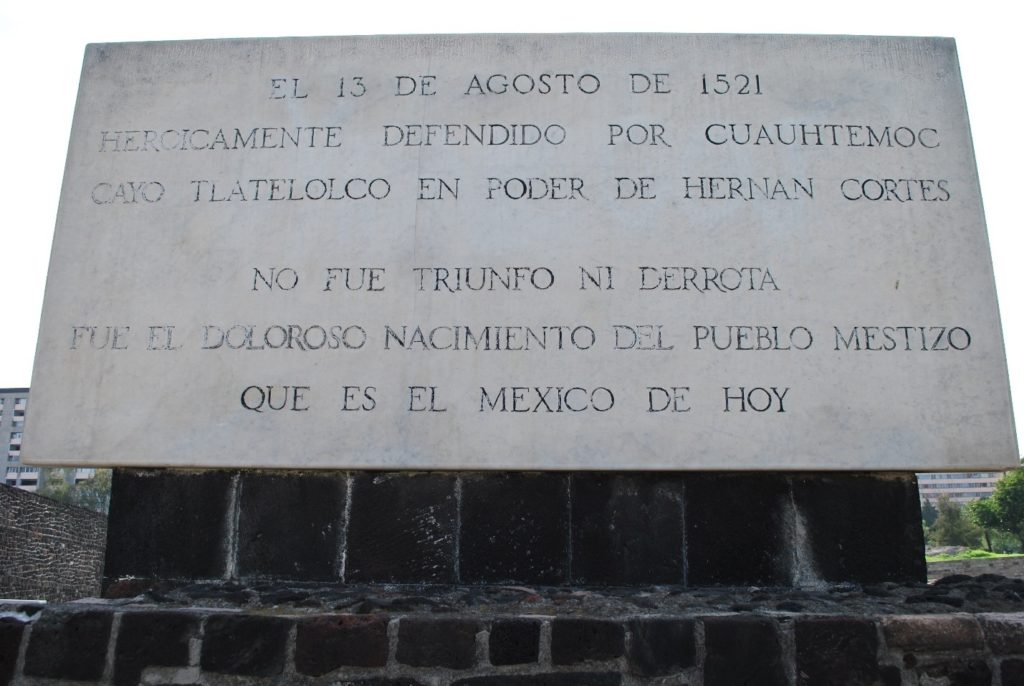
One could argue that this marked the beginning of Hispanic heritage in the New World. It also marked the end of the world as the Mexica knew. Located in the Basin of Mexico, and now buried below Colonial period Mexico City and the modern capital of Mexico, Tenochtitlan was one of the largest cities in the world when it Hernan Cortes arrived on 8 November 1519. Two years later, the city had been reduced to ruins, and the Colonial era had begun.
Over the next half a millennium, the city expanded. Big avenidas, still present today, follow the ancient pre-Contact roads that once connected Tenochtitlan with the shores of Lake Texcoco. The center of the ancient capital transformed into the heart of a new nation, with the presidential palace and the main cathedral just blocks away of the ruins of the Templo Mayor.
The anthropology collections of the Houston Museum of Natural Science include art work by the Gentling brothers. These twin brothers painted scenes set in Tenochtitlan and built detailed scale models of the structures that once defined Tenochtitlan’s skyline.
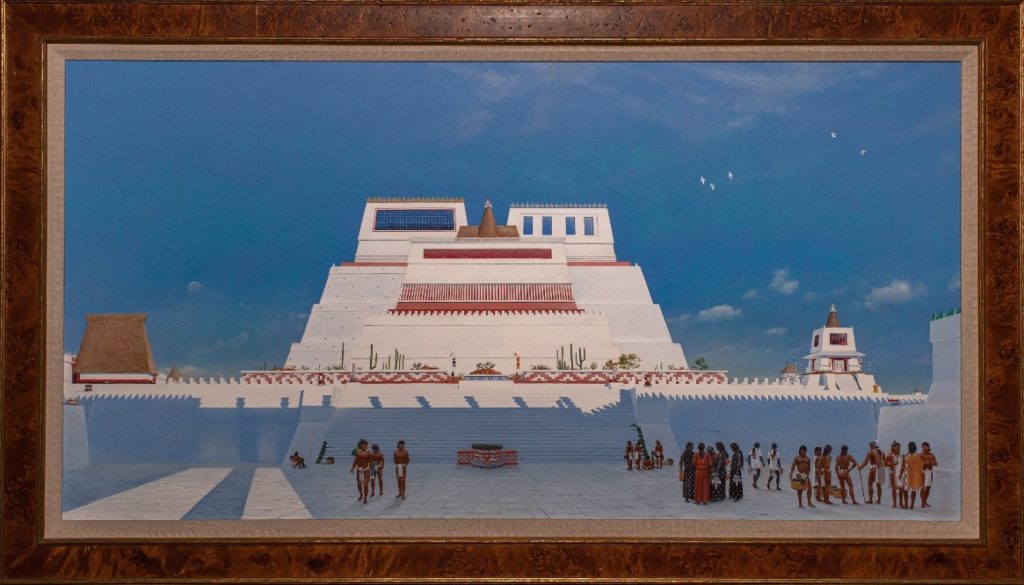
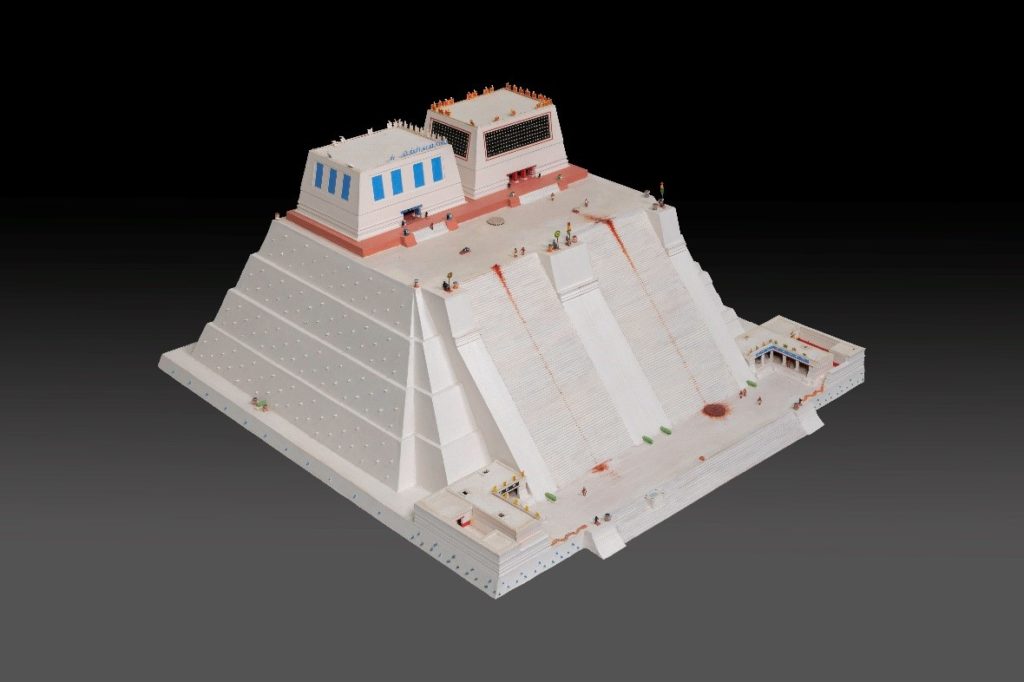
On 13 August 1521, with the capture of the last Aztec ruler, the Conquistadores ended Aztec culture as an independent political and cultural entity. As the inscription mentioned above indicates, it marked the painful birth of the mestizo people that are Mexico today.
Hispanic culture should be celebrated. However, we should not lose sight that with the emergence of Hispanic culture on this side of the ocean came the disappearance of Indigenous cultures.
As we celebrate, we should also commemorate.
For another look at the Gentling Brothers works of art, take a look at this past article.





